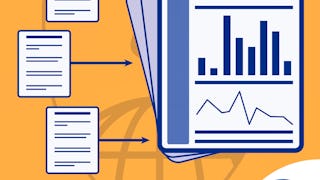In this course, you’ll learn more advanced operational skills that you and your team need to run a successful clinical trial. You’ll learn about the computation of sample size and how to develop a sample size calculation that’s suitable for your trial design and outcome measures. You’ll also learn to use statistical methods to monitor your trial for safety, integrity, and efficacy. Next, you’ll learn how to report the results from your clinical trials through both journal articles and data monitoring reports. Finally, we’ll discuss the role of the analyst throughout the trial process, plus a few additional topics such as simulations and adaptive designs.

4 days left: Get a Black Friday boost with $160 off 10,000+ programs. Save now.


Clinical Trials Analysis, Monitoring, and Presentation
This course is part of Clinical Trials Operations Specialization



Instructors: Janet Holbrook, PhD, MPH
10,287 already enrolled
Included with
(83 reviews)
Recommended experience
What you'll learn
Calculate clinical trial sample size
Monitor clinical trial performance
Analyze results from clinical trials
Communicate results from clinical trials
Skills you'll gain
Details to know

Add to your LinkedIn profile
5 assignments
See how employees at top companies are mastering in-demand skills

Build your subject-matter expertise
- Learn new concepts from industry experts
- Gain a foundational understanding of a subject or tool
- Develop job-relevant skills with hands-on projects
- Earn a shareable career certificate

There are 5 modules in this course
Sample size calculation in clinical trials refers to the process for determining how large a trial needs to be in order to have a reasonable expectation of detecting a difference between groups. The end result of the sample size calculation should be an estimate of the number of observations.
What's included
3 videos1 reading1 assignment
In this module, you’ll learn about trial monitoring, which involves statistical methods to assess a trial while it is underway. These methods are used to assess safety, integrity, efficacy, recruitment, data collection, and data quality.
What's included
4 videos1 assignment
Skilled communication of your clinical trial results is critical to ensuring that your efforts have the intended impact. In this module, you’ll learn the best practices for reporting results in both journal publications and in data monitoring reports.
What's included
4 videos1 assignment
Analysts play an important role throughout the trial, not just at the end. In this module, you’ll learn about the analyst’s role, including how the analyst contributes to the trial at every stage of the process.
What's included
5 videos1 assignment
In this module, you’ll learn about some advanced operational functions that should be in your trial team’s toolkit, including simulations, adaptive designs, and Bayesian statistics.
What's included
3 videos1 reading1 assignment
Earn a career certificate
Add this credential to your LinkedIn profile, resume, or CV. Share it on social media and in your performance review.
Instructors


Offered by
Explore more from Public Health
 Status: Free Trial
Status: Free TrialJohns Hopkins University
 Status: Free Trial
Status: Free TrialJohns Hopkins University
 Status: Preview
Status: PreviewJohns Hopkins University
Why people choose Coursera for their career




Learner reviews
83 reviews
- 5 stars
81.92%
- 4 stars
12.04%
- 3 stars
3.61%
- 2 stars
1.20%
- 1 star
1.20%
Showing 3 of 83
Reviewed on Aug 5, 2024
Awesome overview of the nuts and bolts of Clinical Trials for anyone looking to get started
Reviewed on Oct 4, 2025
Excellent introductory course for anyone entering this field.
Reviewed on Dec 31, 2024
A bit of prior knowledge is must to fully understand this course and also strong grip of stats. overall a good course offered by JHU

Open new doors with Coursera Plus
Unlimited access to 10,000+ world-class courses, hands-on projects, and job-ready certificate programs - all included in your subscription
Advance your career with an online degree
Earn a degree from world-class universities - 100% online
Join over 3,400 global companies that choose Coursera for Business
Upskill your employees to excel in the digital economy
Frequently asked questions
To access the course materials, assignments and to earn a Certificate, you will need to purchase the Certificate experience when you enroll in a course. You can try a Free Trial instead, or apply for Financial Aid. The course may offer 'Full Course, No Certificate' instead. This option lets you see all course materials, submit required assessments, and get a final grade. This also means that you will not be able to purchase a Certificate experience.
When you enroll in the course, you get access to all of the courses in the Specialization, and you earn a certificate when you complete the work. Your electronic Certificate will be added to your Accomplishments page - from there, you can print your Certificate or add it to your LinkedIn profile.
Yes. In select learning programs, you can apply for financial aid or a scholarship if you can’t afford the enrollment fee. If fin aid or scholarship is available for your learning program selection, you’ll find a link to apply on the description page.
More questions
Financial aid available,


